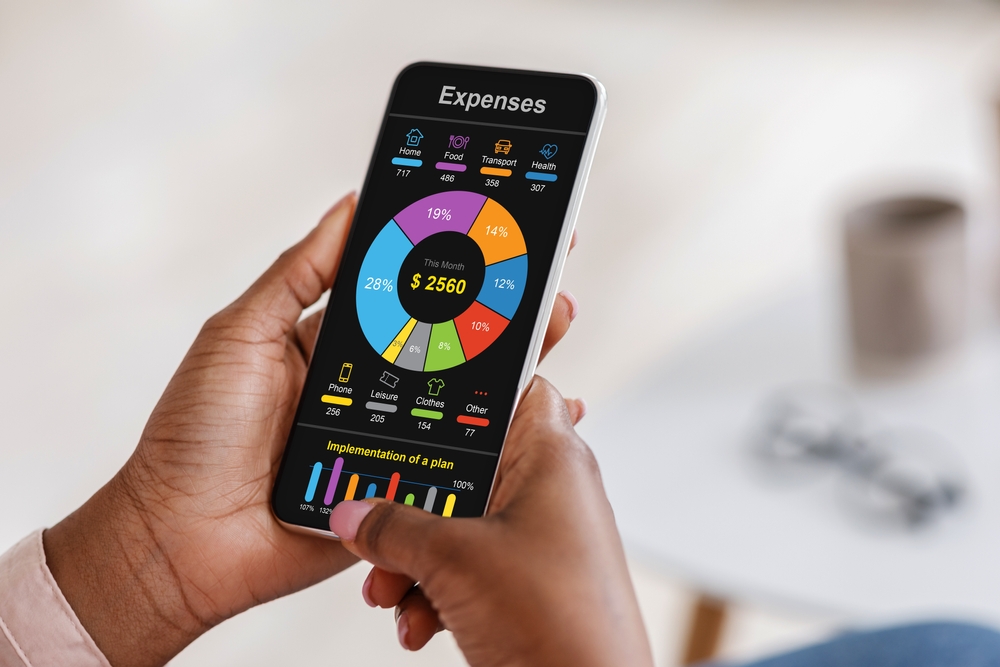The Ultimate Guide to 2024’s Top Personal Finance Apps for Budgeting Success

In today’s fast-paced digital world, managing your finances has never been easier – or more complex. With a plethora of personal finance apps available at our fingertips, it’s crucial to find the right tool that aligns with your financial goals and lifestyle. Whether you’re a seasoned budgeter or just starting your journey towards financial freedom, this comprehensive guide will help you navigate the landscape of personal finance apps and choose the best one for your needs.

Why Use a Personal Finance App?
Before we dive into the specifics, let’s take a moment to consider why using a personal finance app can be a game-changer for your financial health:
- Real-time tracking: Keep tabs on your spending habits as they happen.
- Goal setting: Visualize and work towards your financial aspirations.
- Automation: Streamline bill payments and savings contributions.
- Financial insights: Gain valuable data-driven insights into your money habits.
- Accessibility: Manage your finances on-the-go from your smartphone or tablet.
Now that we’ve established the benefits, let’s explore some of the top contenders in the personal finance app arena.
Comparison Table: 2024’s Best Personal Finance Apps for Budgeting
| App Name | Key Features | Price | User Rating | Best For |
|---|---|---|---|---|
| Mint | Comprehensive budgeting, free credit score, bill tracking | Free | 4.5/5 | All-in-one financial management |
| YNAB (You Need A Budget) | Zero-based budgeting, goal tracking, educational resources | $14.99/month or $98.99/year | 4.8/5 | Hands-on budgeters |
| Personal Capital | Investment tracking, retirement planning, wealth management | Free (paid advisory services available) | 4.7/5 | Investment-focused users |
| PocketGuard | Bill negotiation, automated savings, spending limits | Free (Pro version $7.99/month) | 4.6/5 | Overspenders |
| Goodbudget | Envelope budgeting system, shared budgets for couples | Free (Plus version $7/month) | 4.5/5 | Couples and families |
| EveryDollar | Simple interface, customizable budget categories | Free (Plus version $129.99/year) | 4.7/5 | Dave Ramsey followers |
| Clarity Money | AI-powered insights, subscription management | Free | 4.3/5 | Subscription optimizers |
| Wally | Manual expense tracking, goal setting | Free (Gold version $8.99/month) | 4.2/5 | Detail-oriented budgeters |
| Acorns | Micro-investing, round-up savings | $3-$5/month | 4.4/5 | Beginner investors |
| Honeydue | Couple-focused budgeting, bill reminders | Free | 4.6/5 | Couples managing finances together |
Now that we’ve got an overview of the top contenders, let’s dive deeper into each app and explore what makes them stand out from the crowd.
Detailed Reviews of Top Personal Finance Apps
1. Mint: The Jack-of-All-Trades
Mint has long been a favorite among budgeters, and for good reason. This free app offers a comprehensive suite of financial management tools that cater to a wide range of needs.
Key Features:
- Automatic categorization of transactions
- Bill tracking and reminders
- Free credit score monitoring
- Investment tracking
- Custom budget creation
User Experience:
Mint’s intuitive interface makes it easy for users of all experience levels to navigate. The app automatically syncs with your bank accounts, credit cards, and investment portfolios, providing a holistic view of your financial health.
Human Recommendation:
Sarah, a 32-year-old marketing manager, shares her experience: “I’ve been using Mint for over five years now, and it’s completely transformed how I manage my money. The automatic categorization saves me so much time, and the bill reminders have helped me avoid late fees. It’s like having a personal financial assistant in my pocket!”
For more user experiences and discussions about Mint, check out this Reddit thread on personal finance apps.
2. YNAB (You Need A Budget): The Budget Guru
YNAB takes a more hands-on approach to budgeting, focusing on the zero-based budgeting method where every dollar has a job.
Key Features:
- Real-time budget adjustments
- Goal tracking
- Debt payoff planning
- Extensive educational resources
User Experience:
While YNAB has a steeper learning curve compared to some other apps, users who commit to its methodology often report significant improvements in their financial habits.
Human Recommendation:
Tom, a 45-year-old teacher, explains: “YNAB changed my life. I was always living paycheck to paycheck, but after using YNAB for six months, I managed to save $5,000 for an emergency fund. The app forces you to be intentional with every dollar, which was exactly what I needed.”
For a deep dive into YNAB’s methodology and user experiences, check out this YNAB success stories blog post.
3. Personal Capital: The Investor’s Choice
Personal Capital shines when it comes to investment tracking and wealth management, making it an excellent choice for those focused on long-term financial growth.
Key Features:
- Investment checkup tool
- Retirement planner
- Net worth tracker
- Cash flow analysis
User Experience:
Personal Capital’s dashboards provide clear visualizations of your financial data, making it easy to understand your overall financial picture at a glance.
Human Recommendation:
Emily, a 38-year-old software engineer, shares: “As someone who’s actively investing for retirement, Personal Capital has been invaluable. The investment checkup feature helped me realize I was overpaying on fees in some of my accounts. I’ve since optimized my portfolio and am on track to retire early!”
For more insights on using Personal Capital for investment tracking, visit this Bogleheads forum discussion.
4. PocketGuard: The Overspender’s Savior
PocketGuard is designed to help users reign in their spending and find areas where they can save money.
Key Features:
- “In My Pocket” feature showing how much you can spend
- Bill negotiation service
- Automatic savings goals
- Customizable spending categories
User Experience:
PocketGuard’s clean interface and straightforward approach make it easy for users to understand their spending habits and identify areas for improvement.
Human Recommendation:
Alex, a 28-year-old graphic designer, says: “PocketGuard was a wake-up call for me. I had no idea how much I was overspending on subscriptions and eating out. The app helped me negotiate better rates on my bills and set up automatic savings. Now I feel much more in control of my finances.”
To learn more about how PocketGuard compares to other budgeting apps, check out this NerdWallet comparison article.
5. Goodbudget: The Digital Envelope System
Goodbudget brings the classic envelope budgeting system into the digital age, making it an excellent choice for those who prefer a more traditional approach to budgeting.
Key Features:
- Virtual envelope system
- Shared budgets for households
- Debt tracking
- Spending by envelope reports
User Experience:
Goodbudget’s interface is straightforward, mimicking the physical envelope system many users are familiar with. This makes it easy to allocate funds to different spending categories and track progress.
Human Recommendation:
Maria, a 35-year-old nurse and mother of two, shares: “Goodbudget has been a lifesaver for our family. My husband and I can both access the budget from our phones, so we’re always on the same page about our spending. The envelope system helps us prioritize our expenses and save for big goals like family vacations.”
For tips on making the most of Goodbudget’s envelope system, visit their official blog.
Making the Most of Your Chosen App
Whichever app you choose, here are some tips to maximize its effectiveness:
- Be consistent: Regular check-ins and updates are key to successful budgeting.
- Customize categories: Tailor spending categories to reflect your unique lifestyle and goals.
- Set realistic goals: Start small and gradually increase your financial targets.
- Use all features: Explore all the app’s functionalities to get the most value.
- Sync with your partner: If managing finances as a couple, ensure both partners are on board and actively using the app.
The Future of Personal Finance Apps
As technology continues to evolve, we can expect personal finance apps to become even more sophisticated. Some trends to watch for include:
- AI-powered insights: More advanced algorithms providing personalized financial advice.
- Open banking integration: Seamless connectivity with a wider range of financial institutions.
- Cryptocurrency tracking: As digital currencies become mainstream, expect more apps to incorporate crypto portfolio management.
- Gamification: Engaging features to make budgeting more enjoyable and rewarding.
For a deeper look into the future of fintech and personal finance apps, check out this Forbes article on fintech trends.
Frequently Asked Questions
To wrap up our comprehensive guide, let’s address some common questions about personal finance apps:
1. Are personal finance apps safe to use?
Most reputable personal finance apps use bank-level encryption and security measures to protect your data. However, it’s essential to use strong, unique passwords and enable two-factor authentication when available. Always research an app’s security features before linking your financial accounts.
2. Can I use multiple personal finance apps simultaneously?
Yes, many users find value in using different apps for specific purposes. For example, you might use Mint for overall budgeting and Personal Capital for investment tracking. Just be mindful of potential overlap and ensure you’re not overwhelmed by managing multiple apps.
3. What should I do if I’m not tech-savvy but want to start budgeting?
Start with a user-friendly app like Mint or PocketGuard, which offer guided setups and intuitive interfaces. Many apps also provide educational resources and customer support to help you get started. Don’t be afraid to take it slow and learn as you go.
4. How often should I check my personal finance app?
For best results, aim to check your app at least weekly. This allows you to stay on top of your spending, adjust your budget as needed, and catch any unusual transactions early. Some users prefer daily check-ins, while others find monthly reviews sufficient. Find a rhythm that works for you and stick to it.
5. Can personal finance apps replace professional financial advice?
While personal finance apps are powerful tools for day-to-day money management, they shouldn’t completely replace professional financial advice, especially for complex situations like estate planning or tax strategy. Consider using these apps in conjunction with periodic consultations with a financial advisor for a well-rounded approach to your finances.
Conclusion: Your Path to Financial Wellness
Embarking on a journey towards better financial health is a commendable goal, and personal finance apps can be invaluable companions along the way. By choosing the right app for your needs and committing to using it consistently, you’re taking a significant step towards achieving your financial dreams.
Remember, the best app for you is the one you’ll actually use. Don’t be afraid to try out a few different options before settling on your perfect financial partner. With dedication, the right tools, and a positive attitude, you’ll be well on your way to mastering your money and building a secure financial future.
Have you had success with a personal finance app not mentioned here? Share your experiences in the comments below and help others on their financial journey!


